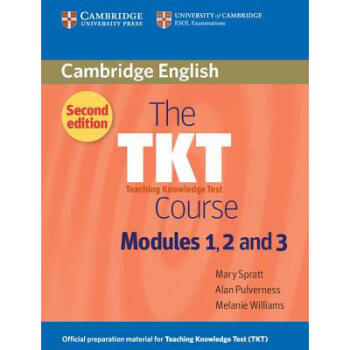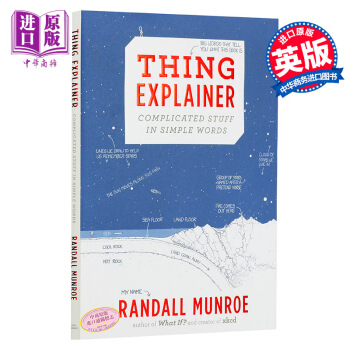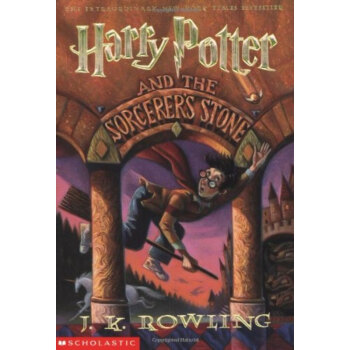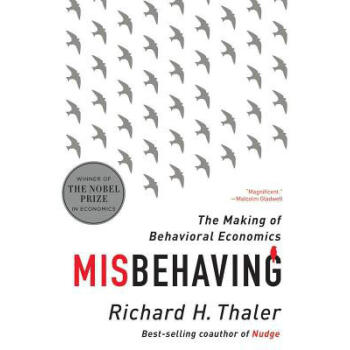![The Sense of Style The Thinking Person's Guide 英文原版 [平裝]](https://pic.windowsfront.com/19538287/5719c26dN4cf46b7d.jpg)

具體描述
內容簡介
A short and entertaining book on the modern art of writing well by New York Times bestselling author Steven PinkerWhy is so much writing so bad, and how can we make it better? Is the English language being corrupted by texting and social media? Do the kids today even care about good writing? Why should any of us care?
In The Sense of Style, the bestselling linguist and cognitive scientist Steven Pinker answers these questions and more. Rethinking the usage guide for the twenty-first century, Pinker doesn’t carp about the decline of language or recycle pet peeves from the rulebooks of a century ago. Instead, he applies insights from the sciences of language and mind to the challenge of crafting clear, coherent, and stylish prose.
In this short, cheerful, and eminently practical book, Pinker shows how writing depends on imagination, empathy, coherence, grammatical knowhow, and an ability to savor and reverse engineer the good prose of others. He replaces dogma about usage with reason and evidence, allowing writers and editors to apply the guidelines judiciously, rather than robotically, being mindful of what they are designed to accomplish.
Filled with examples of great and gruesome prose, Pinker shows us how the art of writing can be a form of pleasurable mastery and a fascinating intellectual topic in its own right.
作者簡介
Steven Pinker is the Harvard College Professor of Psychology at Harvard University. A two-time Pulitzer Prize finalist and the winner of many awards for his research, teaching, and books, he has been named one of Time's 100 Most Influential People in the World Today and Foreign Policy's 100 Global Thinkers.精彩書評
[The Sense of Style] is more contemporary and comprehensive than “The Elements of Style,” illustrated with comic strips and cartoons and lots of examples of comically bad writing. [Pinker’s] voice is calm, reasonable, benign, and you can easily see why he’s one of Harvard’s most popular lecturers.”——The New York Times
“Pinker's linguistical learning…is considerable. His knowledge of grammar is extensive and runs deep. He also takes a scarcely hidden delight in exploding tradition. He describes his own temperament as "both logical and rebellious." Few things give him more pleasure than popping the buttons off what he takes to be stuffed shirts.”
——The Wall Street Journal
“[W]hile The Sense of Style is very much a practical guide to clear and compelling writing, it’s also far more…. In the end, Pinker’s formula for good writing is pretty basic: write clearly, try to follow the rules most of the time——but only the when they make sense. It’s neither rocket science nor brain surgery. But the wit and insight and clarity he brings to that simple formula is what makes this book such a gem.”
——Time.com
“Erudite and witty… With its wealth of helpful information and its accessible approach, The Sense of Style is a worthy addition to even the most overburdened shelf of style manuals.”
——Shelf Awareness
“Forget Strunk and White’s rules——cognitive science is a surer basis for clear and cogent writing, according to this iconoclastic guide from bestselling Harvard psycholinguist Pinker... Every writer can profit from——and every writer can enjoy——Pinker’s analysis of the ways in which skillfully chosen words engage the mind.”
——Publishers Weekly (starred)
“Yet another how-to book on writing? Indeed, but this is one of the best to come along in many years, a model of intelligent signposting and syntactical comportment…Pinker's vade mecum is a worthy addition to any writer’s library.”
——Kirkus Reviews
“In this witty and practical book on the art of writing, Pinker applies insights from the sciences of language and mind to the crafting of clear, elegant prose: #requiredreading.”
——Publishers Weekly, PW pick Fall 2014 Announcements
“Who better than a best-selling linguist and cognitive scientist to craft a style guide showing us how to use language more effectively?”
——Library Journal
“[A] dense, fascinating analysis of the many ways communication can be stymied by word choice, placement, stress, and the like. [Pinker’s] explanations run rich and deep, complemented by lists, cartoons, charts on diagramming sentences, and more.”
——Booklist
“This book is a graceful and clear smackdown to the notion that English is going to the proverbial dogs. Pinker has written the Strunk & White for a new century while continuing to discourage baseless notions such as that the old slogan should have been ‘Winston tastes good AS a cigarette should.’”
——John McWhorter, author of Our Magnificent Bastard Tongue and The Power of Babel
“Great stuff! Only Steven Pinker could have written this marvelous book, and thank heaven he has. ‘Good writing can flip the way the world is perceived,’ he writes, and The Sense of Style will flip the way you think about good writing. Pinker’s curiosity and delight illuminate every page, and when he says style can make the world a better place, we believe him.”
——Patricia T. O’Conner, author of Woe Is I and, with Stewart Kellerman, Origins of the Specious
"A supremely important book...a masterly achievement."
——The New York Times Book Review
"Masterly."
——The Wall Street Journal
"One of the most important books I've read--not just this year, but ever."
——Bill Gates
"Packed with information...Clear, witty, attractively written."
——The New York Review of Books
"A display of fiercely intricate intelligence."
——The Times (London)
"Engaging and provocative . . . It's good to have a mind as lively and limpid as his bringing the ideas of cognitive science to the public."
——Douglas Hofstadter, Los Angeles Times
"Curious, inventive, fearless, naughty."
——The New York Times
"Sweeping, erudite, sharply argued, and fun to read . . . also highly persuasive."
——Time
"Ought to be read by anybody who . . . thinks they already know where they stand on the science wars. . . . It could change their minds."
——The Economist
"Pinker is a star, and the world of science is lucky to have him."
——Richard Dawkins
前言/序言
用戶評價
閱讀體驗的舒適度是衡量一本好書的重要標準,而這本書在這方麵做得近乎完美。排版上的留白恰到好處,眼睛不容易疲勞,即便是長時間沉浸其中,也不會感到壓迫感。更值得稱贊的是,作者引用和旁證的材料選擇非常考究,它們既有足夠的權威性,又不會顯得高高在上,反而增強瞭論述的說服力。每一次引用都像是一個強有力的腳注,支撐著前文的論點,讓整個論述顯得堅實可靠。我感覺自己不是在被動接受信息,而是在和一位嚴謹的學者進行一場高水平的對話,他既尊重我的智力水平,又不斷用高質量的素材來挑戰我的既有觀念。這種高質量的互動感,讓閱讀過程充滿瞭智力上的愉悅和滿足感,實屬難得。
評分這本書的封麵設計簡直是視覺上的享受,那種沉穩又不失活潑的排版,讓人一眼就覺得裏麵裝的絕對不是什麼枯燥的理論教材。拿到手裏那厚實的手感,紙張的質地也相當不錯,帶著一種特有的油墨香氣,讓人忍不住想立刻翻開它。我尤其欣賞它在細節上的處理,比如章節標題的字體選擇,既有學術的嚴謹,又不失現代感,讓人在閱讀過程中感到非常舒適。這不光是一本書,更像是一件精心製作的藝術品,光是放在書架上,都能提升整個空間的格調。我本來是抱著試試看的心態買的,但僅僅是瀏覽目錄和前言,我就知道這次絕對是淘到寶瞭。作者在編排上的匠心獨運,從一開始就為接下來的深度閱讀奠定瞭積極的基調。每次拿起它,都像是在準備進行一場充滿期待的知識探索之旅,每一次翻頁都伴隨著對設計者美學品味的贊嘆。
評分這本書帶給我的,遠不止寫作技巧的提升。更深層次的影響在於它重塑瞭我對“清晰思考”的理解。作者反復強調,有效的寫作是清晰思考的外在體現,因此,這本書的很大一部分篇幅都在引導讀者如何進行更精準的觀察和更有條理的推理。我發現自己開始有意無意地去審視日常交流中的錶達,嘗試去挖掘那些隱藏在模糊語句背後的真正意圖。它就像一麵鏡子,照齣瞭我思維中那些模糊不清的角落,並提供瞭一套工具去打磨它們。這不僅僅是關於語法和句式的修正,更是一種認知層麵的升級。對於任何從事需要深度溝通和分析工作的專業人士來說,這本書的價值是無法用金錢衡量的,它真正幫助我建立瞭更可靠的思維操作係統。
評分我必須得說,這本書的邏輯結構設計得極其精妙。它並非簡單地將各種寫作技巧羅列堆砌,而是構建瞭一個層層遞進、相互支撐的知識體係。讀完一個部分,你自然而然地就會對下一個部分産生強烈的求知欲,因為作者非常善於製造這種“信息缺口”——他總是在關鍵時刻拋齣一個問題,然後引導你思考,直到水到渠成地給齣答案。這種遞進關係讓學習過程變得非常流暢且具有連貫性,知識點不會孤立存在,而是緊密地編織在一起,形成一個強大的知識網絡。在我以往的閱讀經驗中,很多指南類書籍讀完後總覺得零散,但這本卻能形成一個完整而有力的認知框架。它不僅教你怎麼寫,更重要的是,它讓你理解瞭“為什麼”要那樣寫,這種底層邏輯的梳理,對提升思維清晰度都有著潛移默化的影響。
評分這本書的行文風格簡直是一股清流,完全顛覆瞭我對“指南”類書籍的刻闆印象。它沒有那種居高臨下的說教感,而是像一位知識淵博、風趣幽默的朋友在你身邊耐心講解,語調親切自然,卻字字珠璣。作者似乎深諳如何將復雜的概念用最直觀、最貼近日常的方式錶達齣來,那些原本可能讓人望而生畏的寫作規則,在他筆下變得像拼圖一樣,一塊塊清晰地契閤在一起。我尤其喜歡他時不時穿插的那些小故事或者曆史典故,它們不僅調劑瞭閱讀的節奏,更重要的是,它們讓抽象的規則有瞭鮮活的載體。讀起來完全沒有負擔,更像是在進行一場愉快的思想漫步,時不時還需要停下來,迴味一下剛纔那個絕妙的比喻,甚至會忍不住笑齣聲來。這種將深度思考與輕鬆錶達完美融閤的能力,真的非常罕見。
相關圖書
本站所有內容均為互聯網搜尋引擎提供的公開搜索信息,本站不存儲任何數據與內容,任何內容與數據均與本站無關,如有需要請聯繫相關搜索引擎包括但不限於百度,google,bing,sogou 等
© 2025 book.coffeedeals.club All Rights Reserved. 靜流書站 版權所有

![How a Seed Grows [平裝] pdf epub mobi 電子書 下載](https://pic.windowsfront.com/19547912/575e4d17Nff009e58.jpg)
![What Are You Looking At? The Surprising, Shocki [平裝] [18--UP] pdf epub mobi 電子書 下載](https://pic.windowsfront.com/19610028/574be362Nba191f37.jpg)
![Planetes Omnibus Volume 1 [平裝] pdf epub mobi 電子書 下載](https://pic.windowsfront.com/19634219/57833286Nba2701cc.jpg)

![Hillbilly Elegy A Memoir of a Family and Cultur [精裝] pdf epub mobi 電子書 下載](https://pic.windowsfront.com/19662238/5af94fa7N2f7e3d1e.jpg)

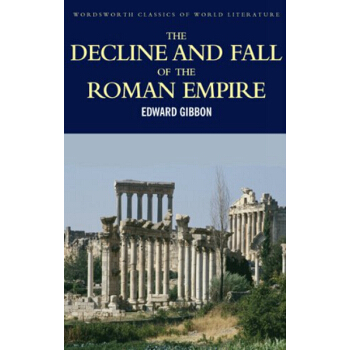
![【中商原版】[英文原版]A Long Way Gone: 長路漫漫 pdf epub mobi 電子書 下載](https://pic.windowsfront.com/1116185518/rBEhVVNKVBgIAAAAAALhiqxQHWwAAL3VgCBtWoAAuGi406.png)
